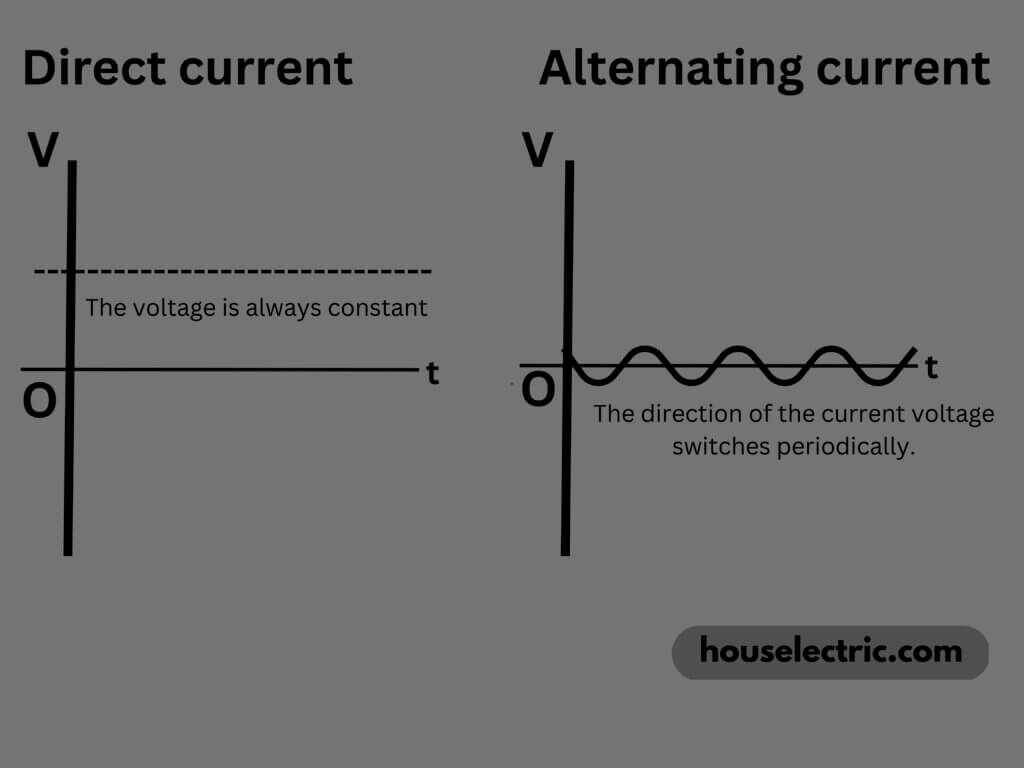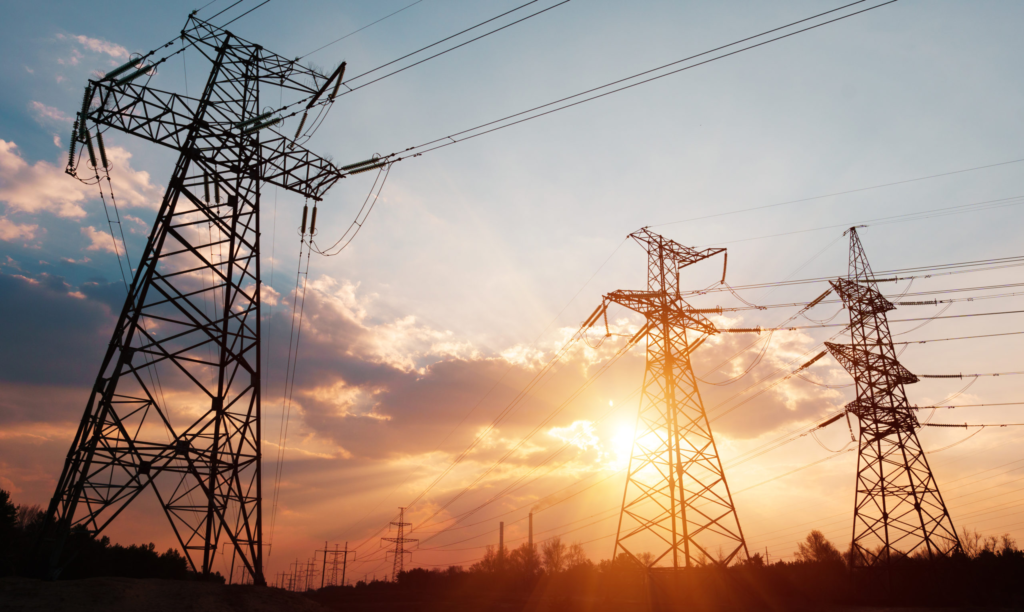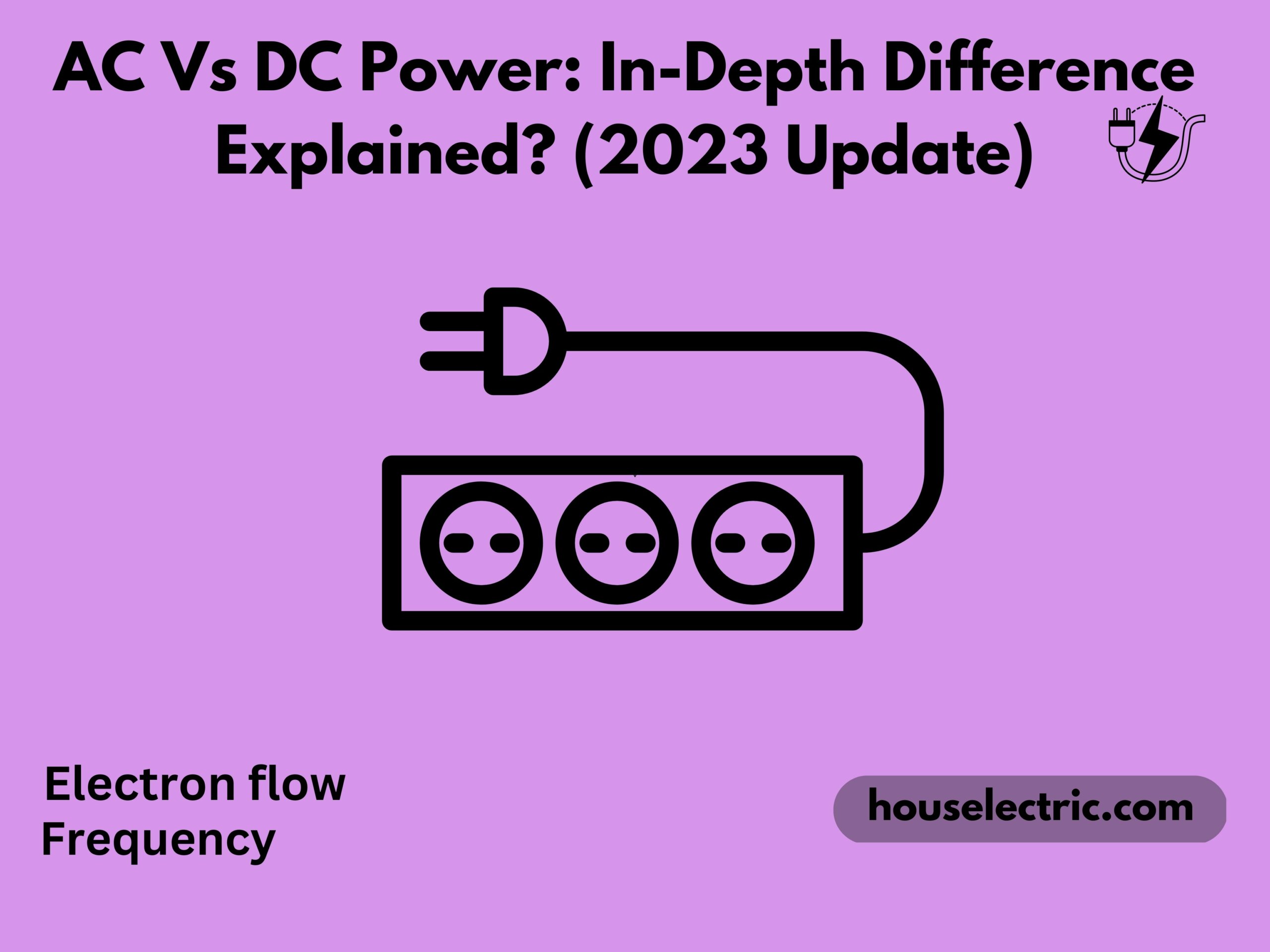A person should have knowledge about the electric current flow direction because it plays an important role many times, such as in the case of installing an electric vehicle charger, for an electrician, or using any appliances that run on battery. So this article will guide you about AC vs DC power.
AC vs DC power:
The flow of electric current are in two way either it flows in one direction or it keeps changing the direction periodically. The electric current that flows in one direction is called a direct current and the electric current that continuously changes direction after a certain period is called an alternating current.

The following table explains in detail AC Vs DC power:
| Points of difference | Alternating current | Direct current |
| Traveling distance | The alternating current can be used to transfer the current over a long distance. for example, it can be used to transfer the current from one city to another. | Direct current is not able to travel for far distances because the direct current loses electric power. |
| Electron flow | The direction of the electron in alternate current is from frontward to backward | The direction of electrons in direct current is only in the forward direction. |
| Frequency | the frequency depends upon the country but generally, the frequency of the alternating current is between 50 to 60 Hz. | There is no frequency or zero in the direct current |
| Source of availability | The ability of the current In alternating current is because of the AC generator. | The current direct current is due to the availability of either a battery electrochemical cell or a photovoltaic cell |
| Types | Alternating currents are of sinusoidal, triangular, and square trapezoidal types | The DC current is available in pure and pulsating forms. |
| Flowing direction | In alternating current direction the current changes due to the rotating magnet | In direct current, the flow of electric current is in a single direction due to steady magnetism. |
| Applications | The alternating current is used to provide power to the electric motor which is used by various appliances such as washing machines, refrigerators, dryers, etc. | the direct current is used in a cell phone, flat screen TV, laptop, computer, etc |
| Loss of energy | The loss of energy during the transmission in alternative current voltage is very low when it is compared to the direct current. | There is a high loss of energy in a direct current so you should not prefer this type of current when the transformers are far away from each other. |
| Current | The current in ac is due to a current of magnitude in which the time varies. | The direct current has a current of constant magnitude. |
| Passive parameters | Impedance | Resistance only |
| Power factor | Lies between 0 and 1 | Lies always at 1 |
Characteristics of DC power supply:
When we compare the AC with the DC power supply in Alternating current the direction of the current changes periodically due to which the current flowing to the circuit there is delays or advances in flow. But in DC flow the current is in the same direction due to which there is no advance or delay in the circuit and the capacitor and coils are also constant.
The followings are some advantages and disadvantages of direct current power supply:
Advantages:
- In a direct current power supply there is no advance or delay in the circuit.
- No chance of generating reactive power.
- They are able to store electricity in batteries, capacitors, etc.

Disadvantages:
- There is difficulty in the current interruption.
- The DC power supply is difficult to convert voltage.
- The power supply has a strong electrolyte effect.

Characteristics of AC power supply:
In the case of alternating current when it is used to transmit power long distances then a very high voltage is used to improve transmission efficiency because if the power is transmitted at a low voltage there will be more power loss. For example, if the power you need is upto 3000 watts and the voltage is 100V, Then you need 30 A of current but if the voltage is 1000 V you need 3A of current.
The followings are some advantages and disadvantages of alternating current power supply:
Advantages:
- In an alternating current power supply, there is less power loss because of high-voltage transmission.
- The alternating current is easy to transform.
- They are easy to shut off when the power is still flowing.
- If you are using alternating current you need not need to worry about positive and negative voltage.

Disadvantages:
- For transmitting power for a long distance requires a higher voltage than the target voltage.
- They are affected by coils and capacitors.
- They are not good to use for ultra-long-distance transmission.
How do they pertain to EV charging?
The AC and DC power sources are used for electric vehicle charging as the EV runs on a battery in which DC power is used to operate so it does not matter if the charging station where the EV is charged uses DC Or AC power the EV battery will only store the DC power.
Basically, the charging station converts the AC to DC power while charging the vehicle which makes the EV have DC power to flow directly to the battery of the EV. There are different levels and types of EV charging.

The following are 3 Electric charging levels:
- Level 1 charging.
- Level 2 charging.
- Level 3 charging.
You can study in detail the types of EV charging from here.
Conclusion:
Hence from above you clearly get an idea about AC vs DC, and what makes them different. also, you need to remember some points that the DC current is more dangerous or hazardous than the AC current because the magnitude of the current in the alternating current is sometimes low and high but in the direct current the magnitude of the current stays the same in all conditions. So if a person gets shocked the direct current will damage the body without any interruption.
FAQ’s
Why the AC current cant is stored in batteries?
In the case of the ac current the source is connected to the negative terminal of the battery and when the current start to flow ac changes the polarity and the positive half cycle cancel outs the negative half cycle hence there is no supply of energy in the battery repeating this process also can damage the battery.
What are the reasons for the loss of energy in the transformer?
The reasons for the loss of energy in the transformer are hysteresis, eddy current loss, and leakage of flux.
- How Many Solar Panels Do I Need For 1000 kWh? (Per Month & Day Explained) - March 29, 2023
- Mastering Your Home’s Electrical Consumption: A Guide to Wattage, Amperage, and Budget Management - March 28, 2023
- Trending Designer GFCI Cover Plates To Buy - March 27, 2023
